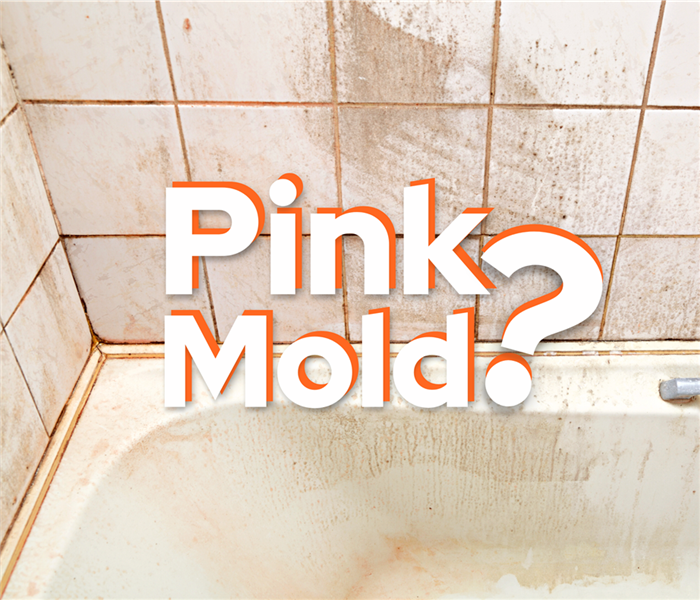Pink Residue: Understanding and Preventing the Fungal Menace in Your Bathroom
3/9/2023 (Permalink)
As a homeowner, you have an endless list of projects to manage. You step into the shower and notice the once-white grout on the floor is now a shade of pink. Over time, the inside of your shower curtain and tub ledges tell the same story. You might think that the pink color is a result of neglect and lack of proper cleaning, but the truth is that the pink-colored grime is actually a result of a specific type of mold called serratia marcescens.
Understanding Where Pink Mold Grows
Serratia marcescens thrives in damp, warm environments such as bathrooms and kitchens. This type of mold is known for its pink, red, or orange color, which can make it easy to spot. It can grow on a variety of surfaces, including tile, grout, silicone, and other materials commonly found in bathrooms. It can also form on surfaces that are frequently exposed to water, such as shower curtains, bath mats, and other bathroom fixtures. The mold can also be found in the drain area where water and soap scum accumulate.
Preventing Pink Mold Growth
This type of mold can produce an unpleasant musty odor and can aggravate allergies and asthma symptoms. It is crucial to clean and sanitize your bathroom regularly to prevent the growth of serratia marcescens and other types of mold. This includes cleaning the tub, shower, and sink, as well as other fixtures that are exposed to water. If you notice any mold in your bathroom, it is important to address the issue as soon as possible.
At-Home Remedies
Mold can be a common problem in homes, particularly in areas that are damp or have poor ventilation. While it is important to address the root cause of mold growth, such as fixing leaks or improving ventilation, there are several at-home ways to effectively reduce small amounts of mold. Remember to wear protective gear, such as gloves and a mask, when cleaning. For spot-treatment, try:
- Vinegar: Mix equal parts white vinegar and water and spray the solution onto the affected area. Let it sit for several hours before scrubbing with a brush and wiping clean.
- Baking Soda: Mix 1/4 tablespoon of baking soda with water to make a paste, then apply it to the affected area. Let it sit for several hours before scrubbing with a brush and wiping clean.
- Hydrogen Peroxide: Mix 1 part hydrogen peroxide with 2 parts water and spray the solution onto the affected area. Let it sit for several minutes before scrubbing with a brush and wiping clean.
- Tea Tree Oil: Mix 1 teaspoon of tea tree oil with 1 cup of water and spray the solution onto the affected area. Let it sit for several hours before scrubbing with a brush and wiping clean.
While these at-home remedies can be helpful for small spot-treating, larger or more severe cases require professional intervention.
Trusting the Professionals at SERVPRO
SERVPRO of Altamonte Springs/Longwood, a professional cleaning and restoration company, can help homeowners address mold and other issues in your home. Their trained technicians use advanced equipment and techniques to safely and effectively remove mold and prevent it from returning.
They can also provide a range of services such as cleaning, sanitizing, and deodorizing to keep your home looking and smelling fresh. Don't let mold take over your home. Trust the experts at SERVPRO Team Nicholson to get the job done right and give you peace of mind. With their help, you can enjoy your clean and fresh-smelling shower once again.


 24/7 Emergency Service
24/7 Emergency Service
